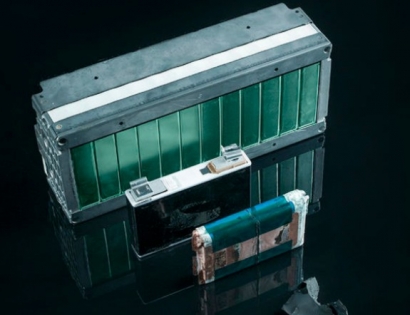
The number of EVs on the road will increase from 3 million to 125 million by 2030. Current battery manufacturing casts a shadow on the overall sustainability of electric vehicles. A new innovation in recycling resolves the sustainability gap by making over 80 percent of the battery recyclable, returns the scarce metals used back into circulation and thus resolves the sustainability gap by reducing the need to mine nickel, cobalt, and other metals.
“There are very few working, economically viable technologies for recycling the majority of materials used in lithium-ion batteries” said Kalle Saarimaa, Vice President, Fortum Recycling and Waste. “We saw a challenge that was not yet solved and developed a scalable recycling solution for all industries using batteries”.
Fortum achieves the high recycling rate of 80 percent with a low-CO2 hydrometallurgical recycling process. The batteries are first made safe for mechanical treatment, with plastics, aluminium and copper separated and directed to their own recycling processes.
The chemical and mineral components of the battery form a ‘black mass’ that typically consists of a mixture of lithium, manganese, cobalt and nickel in different ratios. Of these, nickel and especially cobalt are the most valuable, but also difficult to recover.
Fortum has developed a unique recovery process, involving chemical precipitation methodology that allows these minerals to be recovered and delivered to battery manufacturers to be reused in producing new batteries. This technology was developed by the Finnish growth company Crisolteq.
Most of today’s recycling solutions for EV batteries are not able to recover these scarce metals. Together with Crisolteq, Fortum already has a hydrometallurgical recycling facility in Harjavalta, Finland, where the black mass is treated on an industrial scale.
Fortum is also piloting so-called ‘second life’ applications for batteries; in these applications, the EV batteries are used in stationary energy storages after they are no longer fit for their original purpose.
If the forecasts on the increase in the number of EVs by 2030 hold true, it would mean an 800 percent increase in the demand for nickel and manganese and a 150 percent increase in the demand for cobalt for the production of new batteries. These scarce metals are mined from very few locations, and mining them would increase the greenhouse gas emissions from their production by 500 percent.
Using recycled materials reduces also the CO2 emissions from battery production up to 90 percent.
Achieving a true circular economy for batteries depends on synergic partnerships with battery manufacturers, the car industry, recycling companies and start-ups. The EU can also play a significant role in setting ambitious recycling targets for batteries. Fortum’s invitation to “Join the change for a cleaner world” goes out to everyone committed to solving the sustainability challenges related to using, manufacturing and recycling batteries.
For additional information:

